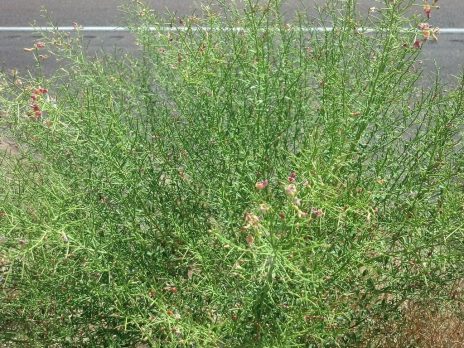Invasive Colorado River vegetation study
Evaluating the efficacy of invasive species treatment along the Colorado River in Grand Canyon National Park

Vegetation communities along the Colorado River in Grand Canyon National Park have been greatly altered by Glen Canyon Dam operations where river flows are tightly controlled and flooding characteristics have dramatically changed. A reduction in large flooding events that deposit sand into riparian areas along the river has promoted vegetation to encroach on sandbars that are important for cultural resource protection, recreation, and biodiversity. In particular, woody clonal species such as arrowweed (Pluchea sericea) and invasive, non-native rhizomatous species such as camelthorn (Alhagi maurorum) encroach on sandbars typically unoccupied by any vegetation and can quickly dominate an area. Grand Canyon National Park’s Vegetation Program conducts invasive species treatments at these areas using a targeted cut-stump method to reduce the possibility of negative consequences from herbicide use in sensitive riparian ecosystems. This study aims to evaluate the effectiveness of these treatments to inform land managers about the most effective and efficient treatments in one of the nation’s most protected river corridors.
Plant species: Acroptilon repens (Russian knapweed), Alhagi maurorum (camelthorn), Pluchea sericea (arrowweed)
Funding source: NAU Ecoinformatics T3 Program
Collaborators: NAU, Grand Canyon National Park, USGS-Grand Canyon Monitoring and Research Center
Participants:
Jay Gearries, PhD Student
Teki Sankey, Professor
Emily Palmquist, Research Ecologist – USGS
Brad Butterfield, Assistant Research Professor
Lonnie Pilkington, Grand Canyon National Park Vegetation Program Manager
Ash Bedford, Grand Canyon National Park Nursery Manager